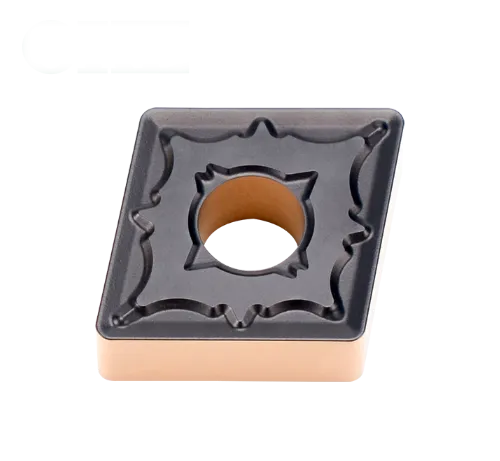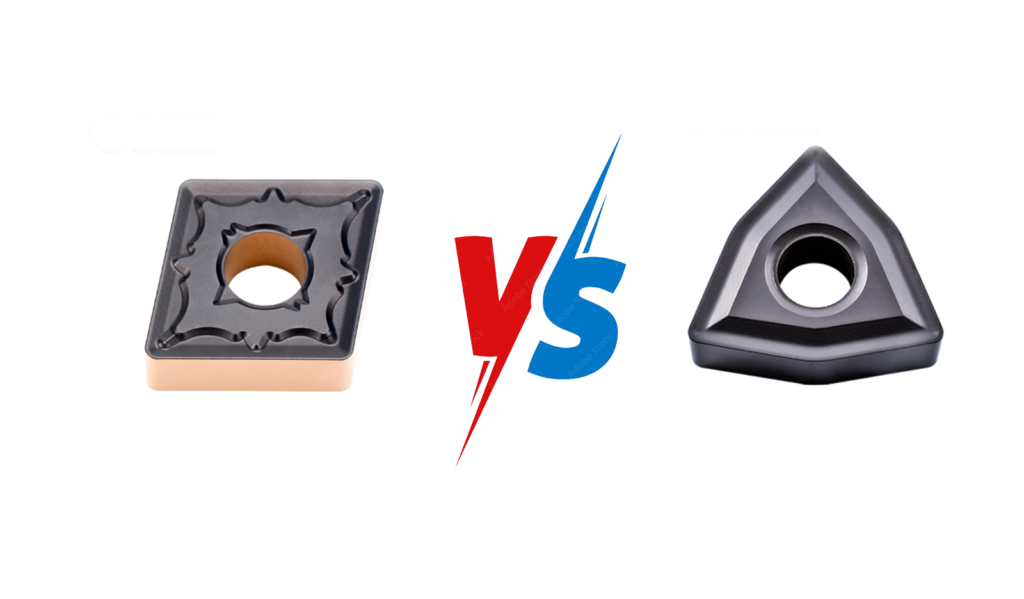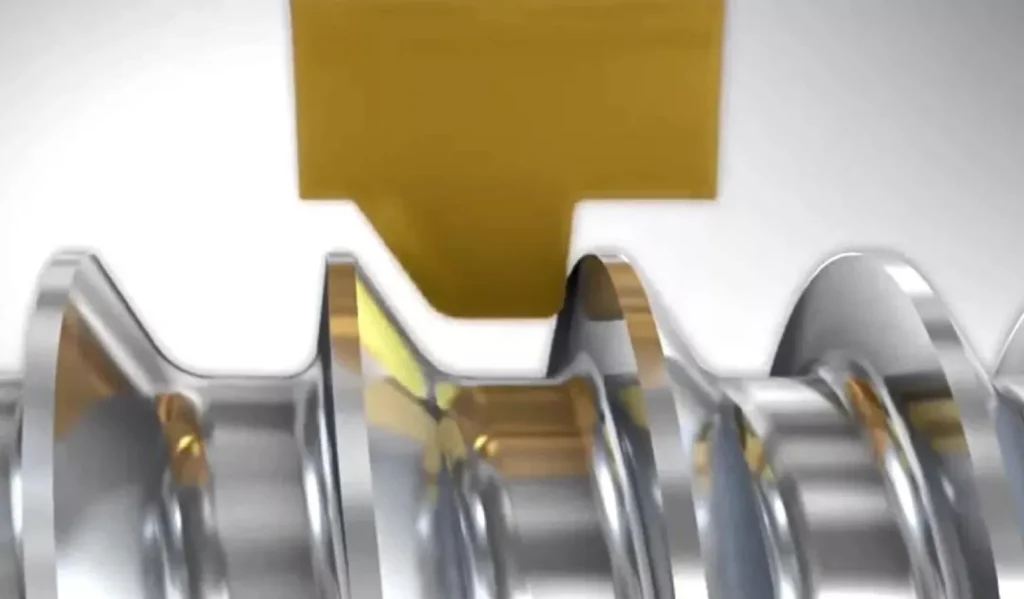CNMG VS WNMG are two common types of inserts used in turning operations. While they share similarities, they also have distinct characteristics that make them suitable for different applications.
CNMG Inserts
- Shape and Design: Rhombic (diamond-shaped) with an 80° corner angle, 0° (neutral) clearance angle, and double-sided, providing 4 cutting edges.
- Strengths:
- Robustness: The 80° corner angle and secure pocket design in the toolholder make CNMG inserts ideal for heavy roughing and high-feed-rate operations. They handle tough materials and interrupted cuts well due to their strong cutting edge.
- Versatility: Suitable for both turning and facing without repositioning the toolholder, making them efficient for job-shop work or roughing/facing combined operations.
- Rigidity: The CNMG’s pocket design offers greater stability, reducing insert movement and improving accuracy, especially in heavy cuts.
- Availability: More common, with a wider range of grades, chipbreakers, and coatings, making them easier to source and often cheaper.
- Weaknesses:
- Fewer cutting edges (4 vs. 6 for WNMG), which may increase cost per edge in high-volume operations.
- May chatter slightly on light finishing cuts compared to other inserts like TNMG.
- Applications:
- Best for roughing operations, machining tough materials (e.g., stainless steel, cast iron, high-temperature alloys), and jobs requiring high material removal rates.
- Preferred for larger parts or heavy-duty CNC and manual lathes with sufficient horsepower.

WNMG Inserts
- Shape and Design: Trigon-shaped (six-sided) with an 80° corner angle, 0° clearance angle, and double-sided, offering 6 cutting edges.
- Strengths:
- Cost-Effectiveness: Six cutting edges reduce the cost per edge, making WNMG inserts economical for general-purpose turning, especially in high-volume production.
- Good Finish: WNMG inserts often provide better surface finishes in medium to finishing cuts due to their geometry, especially with smaller nose radii (e.g., 0.4–0.8 mm).
- Chip Control: The trigon shape can offer improved chip clearance, reducing chip buildup in certain applications.
- Weaknesses:
- Less Rigid: The WNMG’s pocket design has less bearing surface, making it less stable for heavy roughing. Toolholder pockets may wear faster (“wholler out”), leading to insert movement and reduced accuracy.
- Not Ideal for Heavy Cuts: Less robust than CNMG for aggressive machining or tough materials due to the trigon shape’s reduced edge strength.
- Limited Holder Availability: Smaller WNMG toolholders (e.g., for 1/2″ shanks) are harder to find, often requiring 5/8″ or larger shanks, which may not suit smaller lathes.
- Applications:
- Best for medium to light cuts, finishing operations, and general-purpose turning on softer materials or smaller parts.
- Suitable for shops prioritizing economy and where heavy roughing isn’t required.

Key Differences
| Feature | CNMG | WNMG |
|---|---|---|
| Shape | Rhombic (80° angle) | Trigon (80° angle) |
| Cutting Edges | 4 (double-sided) | 6 (double-sided) |
| Strength | Stronger, better for roughing | Less robust, better for finishing |
| Toolholder Rigidity | More secure pocket, less wear | Less secure, prone to pocket wear |
| Applications | Heavy roughing, tough materials | Medium/light cuts, finishing |
| Cost per Edge | Higher (fewer edges) | Lower (more edges) |
| Availability | More common, wider variety | Less common, fewer options |

When to Choose
- Choose CNMG:
- For roughing operations or heavy material removal.
- When machining tough materials like stainless steel or cast iron.
- If you need a versatile insert for combined turning and facing.
- For machines with sufficient power and rigidity (e.g., larger CNC lathes).
- Choose WNMG:
- For finishing or medium cuts where surface finish is critical.
- In high-volume production where cost per edge matters.
- On smaller or less powerful lathes (though ensure toolholder compatibility).
- When chip control is a priority in lighter cuts.
Practical Considerations
- Machine Power: Both are negative rake inserts, requiring more horsepower than positive rake inserts (e.g., CCMT). Smaller lathes (<10″ swing) may struggle, so consider positive rake inserts like CCMT or TCMT for low-power machines.
- Toolholder Wear: WNMG toolholders wear faster due to less pocket support, so inspect regularly to maintain accuracy.
- Material and Chipbreaker: Match the insert grade and chipbreaker to your material (e.g., stainless steel needs specific coatings). CNMG has more grade options.
- Cost: WNMG’s extra edges may save money in high-volume setups, but CNMG’s durability can offset costs in heavy-duty applications.
Recommendation
- For job shops or heavy roughing, CNMG is the go-to due to its strength, versatility, and availability.
- For finishing or cost-sensitive production, WNMG is better, especially if you can manage toolholder wear and don’t need aggressive cuts.
- Always verify your lathe’s horsepower and toolholder compatibility, especially for WNMG on smaller machines.
If you have specific materials, machine details, or operations in mind, I can tailor the recommendation further!



